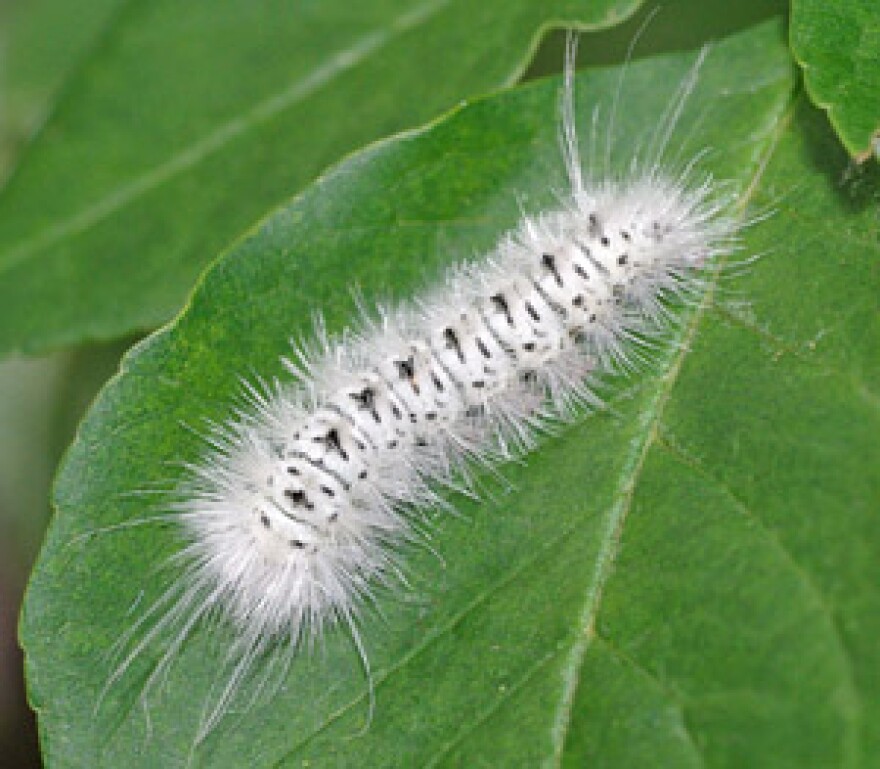Keep your eye out for the Hickory Tussock Moth caterpillar. Although none have been found in Illinois, there have been reports of them in Ohio and Indiana.
The Hickory Tussock Moth releases a toxic venom. If touched, they can cause an allergic reaction. While some people receive an itchy rash, others experienced swelling and nausea.
Peggy Doty, educator for the University of Illinois Extension, came into contact with a Hickory Tussock Moth years ago in Indiana. She said her reaction was milder than a bee sting, but it did swell up and itch a bit. Doty says that although Hickory Tussock Moths are poisonous they are not deadly.
"Now there is that chance that anybody, child or adult, could have a sensitivity to that toxin and have a larger reaction," said Doty, "but it is not something that would drop them on the spot."
Hickory Tussock Moth caterpillars are wooly, white creatures with black markings and long white hairs which are connected to a poison gland. These caterpillars have small barbed hairs that can stick in your skin. They prefer hickory trees, but they also can be found on oak, maple, and ash trees. They are native in Canada and in the U.S. from the northeast to the south central part of the country.
Mild reactions can be treated with soap, water and calamine lotion. Doty states that taking Benadryl for awhile will help get your histamines back in order. More severe reactions require immediate medical attention.
The Hickory Tussock Moth caterpillar has been found in parks, where kids will curiously pick them up. The safest way for children to examine the caterpillar is from a distance, Doty said.
After her experience with the Hickory Tussock Moth, Doty is glad that none have been found in Illinois. There have been no deaths linked to the Hickory Tussock Moth.

